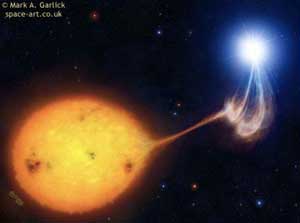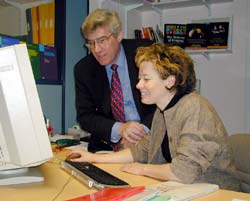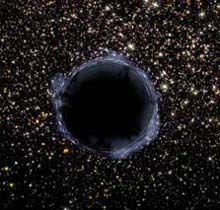This area deals with the fundamental laws and building blocks of nature and how they interact, the properties and the behavior of matter, and research into space and time and their structures.
innovations-report provides in-depth reports and articles on subjects such as astrophysics, laser technologies, nuclear, quantum, particle and solid-state physics, nanotechnologies, planetary research and findings (Mars, Venus) and developments related to the Hubble Telescope.

A new type of star has been discovered lurking as a low mass component in a very compact binary star system.
Astronomers Steve B. Howell of the University of California, Riverside and Tom Harrison of New Mexico State University, Las Cruces, announced today at the American Astronomical Society Meeting in Seattle, Wash., that they have confirmed the existence of a new variety of stellar end-product. This previously unknown type of star has some properties similar to brown dwarf stars and may

Which way does a mammoth skeleton point in Siberia? No, it’s not a Christmas cracker joke. To find the answer you have to look in a rather surprising place – the Institute of Physics’ new online archive.
In an article published in the first edition of Proceedings of the Physical Society in 1874, John Rae writes about the physical properties of ice and mammoth remains. He put forward a theory as to why so many of the mammoth skeletons found near the Yenesei river in Siberia had been found wi

Using a state-of-the-art computer model of the lunar interior, geophysicists at the University of California, Berkeley, have shown that a mighty burp early in the moon’s history could account for some of its geologic mysteries.
The burp of hot rock, like a blob rising to the top of a lava lamp, would have lifted a blanket covering the moon’s core, allowing the core to cool quickly enough to produce a magnetic field.
The moon has long since cooled off and the global magne

A study at Ohio State University has uncovered more evidence that black holes form before the galaxies that contain them.
The finding could help resolve a long-standing debate, said Marianne Vestergaard, a postdoctoral fellow in astronomy at Ohio State.
Vestergaard came to this conclusion when she studied a collection of very energetic, active galaxies known as quasars as they appeared some 12 billion years ago, when the universe was only one billion years old. While the quasars wer

In results presented this week at the 2003 meeting of the American Astronomical Society (AAS) in Seattle, astrophysicist Greg Aldering and colleagues report that their supernova factory project has discovered an unprecedented 34 new supernovae in its first year. The accomplishment would not have been possible without the National Science Foundation (NSF) – supported high performance wireless network link to Palomar Observatory. “This has been the best rookie year for any supernova search pro

Lawrence Livermore National Laboratory astronomers are major partners in a scientific collaboration that will conduct an extremely novel search for small, comet-like bodies in the outer solar system using four half-meter telescopes. The work was described today at the winter meeting of the American Astronomical Society.
Rather than look for the light reflected directly by these objects (as is customary astronomy practice), this project will search for those very rare moments when one of these ob